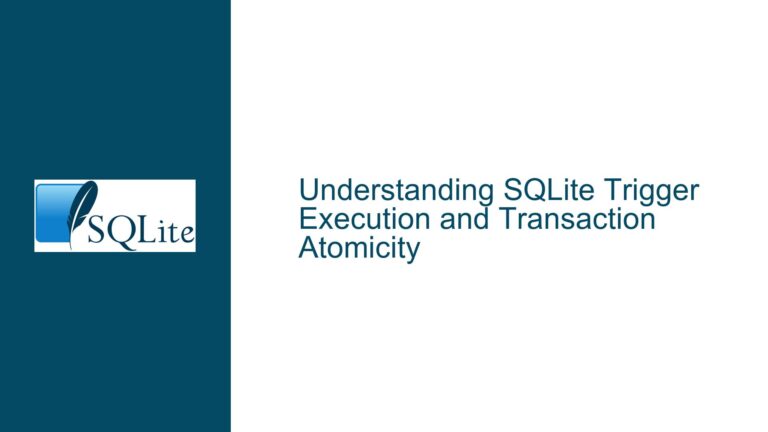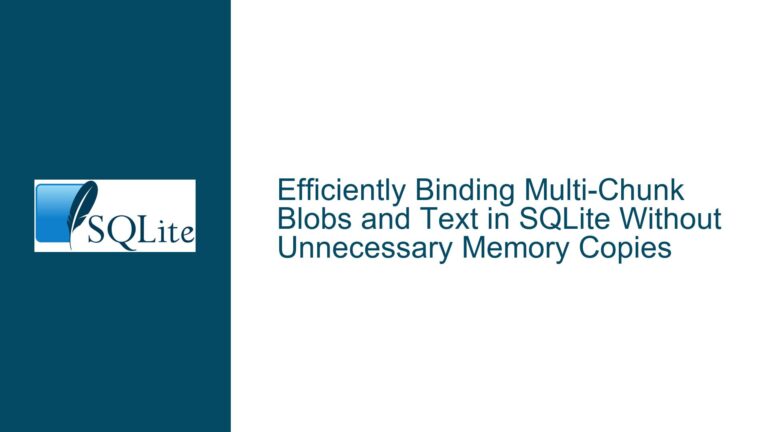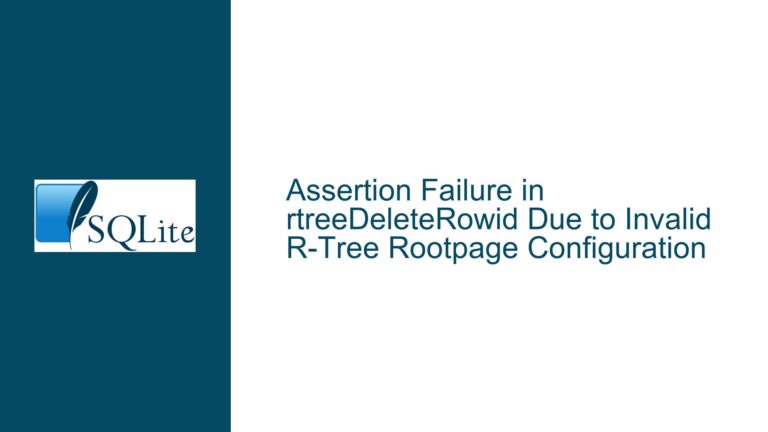Resolving SQLite Schema Export Issues with sqlite_sequence Table
Understanding the sqlite_sequence Table and Its Role in Schema Export
The sqlite_sequence table is an internal SQLite table that is automatically created and managed by SQLite when a table with an AUTOINCREMENT column is defined. Its primary purpose is to keep track of the highest sequence number used in any AUTOINCREMENT column, ensuring that each new row inserted into such a table receives a unique integer value. This table is not intended for direct manipulation by users, and its creation is handled internally by SQLite.
When exporting the schema of a database using the .schema command, SQLite includes the CREATE TABLE sqlite_sequence(name,seq); statement in the output. This can lead to issues when attempting to import the schema into another database, as the sqlite_sequence table is reserved for internal use. Attempting to manually create this table results in an error: Parse error near line 5: object name reserved for internal use: sqlite_sequence.
The .dump command, on the other hand, generates a DELETE FROM sqlite_sequence; statement instead of a CREATE TABLE statement. This approach avoids the error because the sqlite_sequence table is not being created manually; instead, its contents are being reset, which is a permissible operation.
The core issue here is the discrepancy between how the .schema and .dump commands handle the sqlite_sequence table. While .dump generates a statement that is safe to execute during import, .schema generates a statement that causes an error. This inconsistency can be problematic for users who rely on the .schema command to export and import database schemas.
Exploring the Causes Behind the sqlite_sequence Table Export Issue
The root cause of this issue lies in the way SQLite handles internal tables during schema export. The .schema command is designed to provide a complete representation of the database schema, including internal tables like sqlite_sequence. This behavior is intentional, as it ensures that the exported schema is a faithful representation of the database structure. However, this approach does not account for the fact that some internal tables, like sqlite_sequence, cannot be manually recreated during import.
The .dump command, by contrast, is designed to generate a SQL script that can be used to recreate the entire database, including its data. As part of this process, it includes statements to reset the sqlite_sequence table, which is a safe operation. This difference in behavior between the two commands is the primary cause of the issue.
Another contributing factor is the lack of awareness among users about the --nosys option for the .schema command. This option excludes system tables (including sqlite_sequence) from the output, effectively preventing the issue from occurring. However, this option is not widely documented, and many users may not be aware of its existence.
Resolving the sqlite_sequence Table Export Issue: Best Practices and Solutions
To address the issue of the sqlite_sequence table causing errors during schema import, users can adopt several strategies. The most straightforward solution is to use the --nosys option with the .schema command. This option excludes system tables from the output, ensuring that the sqlite_sequence table is not included in the exported schema. For example:
sqlite3 apple.db ".schema --nosys" > schema.sql
This command generates a schema file that does not include the CREATE TABLE sqlite_sequence(name,seq); statement, eliminating the error during import.
Another approach is to use the .dump command instead of .schema when exporting the database structure. The .dump command generates a SQL script that includes both the schema and the data, and it handles the sqlite_sequence table in a way that avoids errors. For example:
sqlite3 apple.db ".dump" > dump.sql
This command generates a dump file that includes the necessary statements to recreate the database without causing errors related to the sqlite_sequence table.
For users who prefer to use the .schema command but want to exclude the sqlite_sequence table manually, they can post-process the schema file to remove the offending statement. This can be done using a simple script or command-line tool. For example, on a Unix-like system, the following command can be used to remove the CREATE TABLE sqlite_sequence(name,seq); statement from the schema file:
sed '/CREATE TABLE sqlite_sequence(name,seq);/d' schema.sql > schema_fixed.sql
This command creates a new file, schema_fixed.sql, that does not include the CREATE TABLE sqlite_sequence(name,seq); statement, allowing it to be imported without errors.
In addition to these solutions, users should be aware of the limitations and intended use cases for the .schema and .dump commands. The .schema command is best suited for generating a human-readable representation of the database schema, while the .dump command is more appropriate for creating a complete backup of the database, including both schema and data.
Finally, users should consider the implications of using AUTOINCREMENT columns in their database design. While AUTOINCREMENT ensures that each row receives a unique integer value, it also introduces the need for the sqlite_sequence table. In some cases, it may be possible to achieve the desired behavior without using AUTOINCREMENT, thereby avoiding the issue altogether. For example, using a simple INTEGER PRIMARY KEY column without AUTOINCREMENT will still automatically generate unique values for each row, but it will not create or require the sqlite_sequence table.
By understanding the role of the sqlite_sequence table and the differences between the .schema and .dump commands, users can avoid the pitfalls associated with schema export and import in SQLite. Adopting the best practices outlined above will ensure a smooth and error-free experience when working with SQLite databases.






